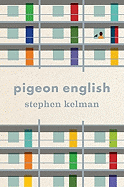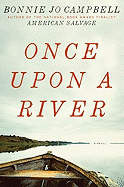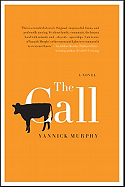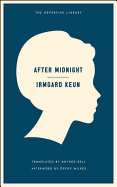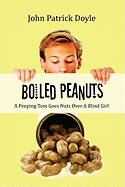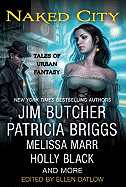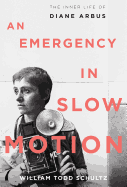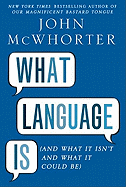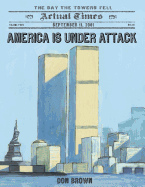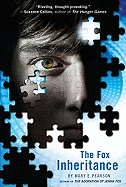Friday, August 26, 2011
The other day, I wrote about books in fall fashion.
Today, I'm going to write about a subject I'd much rather discuss: the fashion of fall books. In other words, what's hot this autumn? Forget about suede boots, skirts of any length and rich textures: let's talk about cool books, stories of any length and richly textured prose.
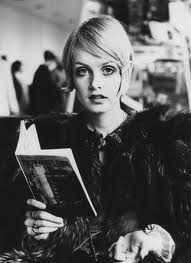 Late August: I recommend an earthy pairing: The Call by Yannick Murphy and The Leftovers by Tom Perrotta. Don't forget your hip boots and rapture garments!
Late August: I recommend an earthy pairing: The Call by Yannick Murphy and The Leftovers by Tom Perrotta. Don't forget your hip boots and rapture garments!
September: You'll enjoy the retro 1980s style of Jeffrey Eugenides's The Marriage Plot and Alan Hollinghurst's The Stranger's Child. However, if the thought of Hammer pants and an Iron Lady bouffant leave you out in the Cold War, try another decade, the 1990s, with an Irish flourish: The Forgotten Waltz by Anne Enright.
October: Go for the sporty look with The Art of Fielding by Chad Harbach and Ali Smith's There But for The (not a typo; that's the title entire). Games not in your ballpark? Try on The Lost Memory of Skin by Russell Banks. Best accessory for this one is a good moisturizer—for your tender psyche.
November: Mourning becomes Electra, they say--and while you may not want to wear black during this gloomy month, you can read two books that are sad yet wise. Umberto Eco's The Prague Cemetery and Joan Didion's Blue Notes strike the right notes of elegant and elegaic despair.
I'm being cheeky, but the truth is that each of these books has style to spare and will enhance the cut of your mind. Which titles will accessorize your fall intellectual style? Tell me: Bethanne@shelf-awareness.com. Happy reading!
Once Upon a River
by Bonnie Jo Campbell
Bonnie Jo Campbell is a familiar name to many readers of literary fiction; her last book of short stories, American Salvage, was a National Book Award finalist. Once Upon a River is a superb addition to her body of work.
The central character of Once Upon a River is Margo, a 16-year-old raw beauty who possesses a gift with a rifle and a fierce admiration for Annie Oakley. It's the 1970s, and Margo is motherless; early in the novel she also loses her father in a violent confrontation. Taking to the fictional Stark River, in rural Michigan, with only minimal supplies but a powerful sense of survival, Margo moves along the water in her grandfather's boat, searching for a place to call home and for people to call family. Her journey involves considerable physical hardship and challenges in subsistence, and her travels introduce her to an assortment of male characters, allowing for companionship, sexual exploration and, ultimately, critical decisions regarding self-preservation.
Campbell's skill in shaping her main character is one of the greatest strengths of this novel. She writes with a highly original voice, yet also with a sense of subtlety; Margo is an unusual teen protagonist. Campbell's descriptions of the moving water and the related landscape are nicely rendered in this novel and illuminate its homage to The Adventures of Huckleberry Finn. Margo's odyssey along the river is life-defining, and lucky readers will travel with her to the water's end. --Roni K. Devlin, owner of Literary Life Bookstore & More
Discover: A well-wrought literary adventure featuring a teen heroine struggling to survive along a powerful and exquisitely depicted river landscape in rural Michigan.
The Call
by Yannick Murphy
Yannick Murphy's fourth novel plants an urgency beneath the sweet tedium of New England country life and, in so doing, brings this tale of simple country veterinarian David Addison to the level of revelations about the risks involved in being alive. Murphy, whose previous works have impressed critics with a blend of sharpness and poignancy, here creates a lead character who is both fearful and heroic. The challenges David will face, and his responses, make this quirky novel something special.
David narrates the story though a ledger-like account of four seasons in his life, with headings such as "What the Wife Cooked for Dinner" and his veterinary activities: "Call," "Action," "Result." In those notes David reveals, along with horse lacerations and dog euthanasias, anxieties about money, his wife's and three children's daily joys, his fears for society's future and mysterious spaceship sightings. When his 12-year-old son is shot by an unseen hunter and lies in a coma for weeks, David becomes obsessed with ferreting out who, in the community of 600, fired the possibly fatal shot. Did someone in the spaceship see the crime? And who keeps calling and hanging up without speaking?
Murphy, herself married to a Vermont vet, paints a portrait of rural, animal-centric family life that is bucolic yet fragile and that resounds with undeniable truthfulness. There are animals that need to be put down, animals that survive what should kill them and humans asked to endure the unthinkable. David's trials and how he absorbs them show us both the helplessness and fortitude that beats within the mammalian chest. --Cherie Ann Parker, freelance journalist and book critic
Discover: A quirky, artful and ultimately moving story of a year in the life of country vet.
Pigeon English
by Stephen Kelman
Prepare to fall in love with Harri, the middle-school student and immigrant who has wound up with his mother and sister Lydia in the London projects while his father and baby sister remain behind in Ghana until the family can raise the money for their passage to the Western world. You won't be able to resist Harri's fresh voice and his open heart. He adores that baby sister, Agnes (their phone conversations are a treat); loves treats like gummis and ice cream; and has the crushes and loyalties and worries of any tween, anywhere.
Unfortunately for Harri (full name: Harrison Opuku), the things he worries about in his life on the socioeconomic fringes of urban life aren't the things that actually threaten him. When he and his friend Dean discover, through their very amateur sleuthing, that a friend's death might be a murder, they put themselves in the path of far more sophisticated and nefarious local gang members.
As Harri wends his way through daily life, with talk of the right sort of trainers (athletic shoes), homework assignments and local characters like "Terry Takeaway," his "pidgin" slang ("bo-styles" for fashionable, "huitious" for formidable and so on) is occasionally interrupted by real "pigeon English": interludes in which a local pigeon makes portentous announcements about Harri's situation. These sections might annoy a reader--or they might provide a welcome change in perspective, illustrating how Kelman, in his debut novel, is providing a slice of life, a look down from above at an innocent below. Harri is the sparrow who falls, but in writing about his brief and lovely life, Kelman and his avian Cassandra makes sure that it is not without our knowledge. --Bethanne Patrick, editor, Shelf Awareness for Readers
Discover: The fresh, funny and ultimately moving story of 11-year-old Ghanaian immigrant to London Harrison Opuku, and why his life matters.
After Midnight
by Irmgard Keun, transl. by Anthea Bell
First published in 1937 by German émigrée author Irmgard Keun (1905-1982) as Nach Mitternacht, this slim but important novel portrays the absurd cruelties of the Third Reich via the sardonic observations of a 19-year-old shopgirl who wants to believe in the greater power of love. Susanne "Sanna" Moder begins her account of the day the Führer visits Frankfurt while harboring a letter from her lover between her breasts and wondering what it can mean. She concludes her tale after midnight, by which time she has recounted the permanent distortion of the lives and loves of her social circle and has altered her own fate. After Midnight is saved from hopelessness by Sanna's ability to perceive the changes around her with more mockery than lament. Her wit and youthful outrage serve as a narrative counterpunch to the largely craven atmosphere that surrounds her, yet she is canny enough to avoid public provocation.
Unlike many voice-driven novels, After Midnight captures not just the first-person protagonist's hopes and travails, but also the desires, predicaments and delinquencies of a dozen other characters. As related in Geoff Wilkes's helpful afterword, Irmgard Keun completed After Midnight in exile after the Nazis banned her first two bestselling novels and halted her career by denying her membership in the Reich Literary Chamber. (Keun snuck back into Germany under a false name in 1940, perhaps protected by inaccurate reports of her suicide.) If the original Nach Mitternacht is as lively as Anthea Bell's snappy English translation, Keun was not only a great satirist but also a great stylist. After Midnight is a sharp, vivid and uncompromising read on an impossible subject. --Holloway McCandless, blogger at Litagogo: A Guide to Free Literary Podcasts
Discover: A shopgirl's sardonic recounting of the day the Führer visited Frankfurt, portraying the everyday cruelties of life within the Third Reich and making a case for the defiant power of love.
Boiled Peanuts
by John Patrick Doyle
Looking for a late summer read? Boiled Peanuts, a whimsical little tale full of characters as nutty as its title, is perfect for the beach or a plane ride.
Shy and awkward, librarian Paul Kirk craves intimacy but his social ineptitude always leaves him on the outside looking in. Not figuratively, but for real: he's a peeping tom. In his quest for closeness, if not stumbling over his bicycle, Paul is tripping into trouble. When he discovers a smarmy gigolo pushing a Ponzi scheme on a kindly middle-aged "cougar," he decides it's time to step out from the shadows and take action. Along the way he finally finds friendship and falls in love with the beautiful but blind Bronwyn. But can this voyeuristic Galahad win the trust of a girl who sees only with her heart?
Touching gently on themes of isolation and acceptance, U.K. transplant Doyle's debut novel, set in a small Southern town, has hints of Carson McCullers's The Heart Is a Lonely Hunter. It's also reminiscent of the 19th-century novels adored by the protagonists, complete with jolly vicars, nosy aunts, family secrets and hidden treasure. But this is a lightweight read, with none of McCullers's existential angst or any Austen-esque aspirations of serious social satire. And Boiled Peanuts is firmly 21st century in its sexual sensibilities. This romance may be a bit raunchy for your maiden aunt, but she'll probably love it. --Tom Lavoie, former publisher
Discover: A peeping tom goes nuts over a blind girl in a witty, modern version of Elizabeth Gaskell's Cranford set in the South.
Science Fiction & Fantasy
Naked City: Tales of Urban Fantasy
by Ellen Datlow, editor
Award-winning editor Ellen Datlow has collected and expertly arranged a selection of 20 urban fantasy short stories from some of the hottest writers in the genre. The collection opens with Jim Butcher's "Curses," in which Harry Dresden uncovers the mystery behind Chicago's legendary Curse of the Billy Goat, while drawing attention to the oddly fervent and refreshingly unconditional devotion of Cubs fans. Among the best of these stories are "Fairy Gifts" by Patricia Briggs, a beautiful, earthy look at historical Butte, Mont., and the immigrants that helped to shape it above and below ground; Melissa Marr's "Guns for the Dead," where the tenuous threads of order in a dead city are exposed in a rough atmosphere reminiscent of the Wild West; and Holly Black's "Noble Rot," which tells the off-kilter story of an over-the-hill rock star slowly dying of cancer and the young woman who lovingly tends to his needs in Asbury Park, N.J.
The true gem lies in the middle of the collection: Matthew Kressel's "The Bricks of Gelecek," a stunning tale of urban destruction and rebirth. Datlow has done an excellent job of assembling these tales in such a manner that, when read in order, each story is a palate cleanser for the next. The tales vary in tone, ranging from the nostalgic or bittersweet to the bizarre or disturbing, but underneath it all, they are united by each author's love for his or her "city." --Sarah Borders, librarian, Houston Public Library
Discover: A perfect mix tape of urban fantasy tales by a diverse selection of authors, all professing their heartfelt love for the "naked city."
Nonfiction
Sex on Six Legs: Lessons on Life, Love, and Language from the Insect World
by Marlene Zuk
Noted biologist Marlene Zuk gives us a window into the fascinating world of insect behavior. Insects perform four tasks essential to the continuation of life on Earth as we know it--pollination, recreation, dung burial and pest control--and yet most humans persist in swatting away members of the insect kingdom, affectless as they are, regarding them as automatons and nuisances.
In a droll, approachable manner, Zuk offers examples to counter the human attitude. Along the way, she looks at biases humans have about ourselves, for instance that with our sophisticated brains, we're the only species that's flexible and capable of acts of mercy and nurturing.
Zuk illustrates that the humans do not have the corner in this particular area. Yellow jacket wasps show an unbelievable finesse in locating the precisely sized caterpillar required to provide a living larder for the wasps' young--and remarkable strength in muscling the caterpillar to the wasps' burrow. Bees communicate food and nest sites to each other through their "waggle dance" and even agree by consensus which site to choose next. Ants mentor each other. Cockroach parents stay together after mating to care for their young; the female secrets a substance "just like milk" to feed them.
If creatures of this scale, with their few molecules of brain and truncated genomes, can act in ways that seem to align with human abilities and values, what does this say about our precious human "superiority?" --Judith Hawkins-Tillirson, proprietress, Wyrdhoard Books, and blogger at Still Working for Books
Discover: An utterly absorbing, accessible view into the insect world, at once as familiar as the mosquito whining in our ears and as alien as any "bugs from Outer Space" movie.
Tom Waits on Tom Waits: Interviews and Encounters
by Paul Maher Jr., editor
Tom Waits on Tom Waits is a collection of lesser-known interviews with Waits over the course of his long career. When tantalizing hints of the artist's ferociously guarded private life begin to emerge, Waits lobs a smoke bomb into the interview in the guise of a fact from his unequalled library of miscellanea--such as a decapitated cockroach's ability to live for weeks.
From his first artistic age, Closing Time (1973), through One from the Heart (1982), we see the young artist re-creating a boho life he came to love from reading Kerouac, chronicling the "underbelly of the American dream." Coincident with meeting his future wife, Waits realized that he "had nailed one foot to the floor and kept... making the same record"; the collaboration between Waits and Kathleen Brennan birthed the breakthrough album Swordfishtrombones (1983). He also credits her with saving his life: with her encouragement, he quit drinking and smoking, ending his self-destructive caricature of a life and freeing him from the closed loop that had hobbled his artistry.
Tom Waits, even in his earliest stage, has never been what could be called "easy listening"; he's the philosopher as artist, never a popular choice, and if that's not daunting enough, his voice ranges from a ragged "been drinking cleaning products all night" to a seductive purr. His lyrics always demand attention, thoughtful listening and an open mind. In these 40-odd pieces, we get a glimpse of an artist honing his craft. --Judith Hawkins-Tillirson, proprietress, Wyrdhoard Books, and blogger at Still Working for Books
Discover: The development of the artistic anomaly that is Tom Waits.
An Emergency in Slow Motion
by William Todd Schultz
Forty years ago, Diane Arbus, the photographer best known for her shots of sideshow "freaks" and other denizens of the social underworld, swallowed two different barbiturates, climbed into her bathtub, slit her wrists and died. In his new study of Arbus, William Todd Schultz suggests that this overkill suicide (her first attempt) may have been just another strategy for this angry, tortured artist "to elicit support, to make people care and respond. What Arbus was after, most likely, was what she was always after--love."
Schultz, professor of psychology at Pacific University in Oregon, seems to be the go-to guy for the special genre of "psychobiography," having published articles about Sylvia Plath, Oscar Wilde, Jack Kerouac, James Agee and a book-length analysis of Truman Capote, Tiny Terror, just out this spring. He has made a career of sifting through artists' primary work, journals, conversations and anecdotes to uncover the often-scrambled brains behind their artistry.
Drawing on Patricia Bosworth's 1984 biography of Arbus, interviews with her octogenarian therapist, literary memoirs of her brother, the poet Howard Nemerov, and entries from her schoolgirl journals recently released by her estate, Schultz meticulously gathers the basic facts of her life and her public photographs into a portrait of a sensitive, concupiscent woman who "passed from the bright light, from a world of wealth in which she felt like a privileged exile, into darkness, the worlds of her subjects." Like her pictures, this dark inner life is not pretty... but it is discomfortingly enlightening. --Bruce Jacobs, founding partner, Watermark Books & Cafe, Wichita, Kan.
Discover: An intriguing peek behind the darkroom door into the mind of renowned photographer Diane Arbus.
What Language Is (and What It Isn't and What It Could Be)
by John McWhorter
The average person in search of his or her roots might find a recognizable genealogy that goes back for five generations; more than that, and things get muddy. The same goes for language, says McWhorter, author of Our Magnificent Bastard Tongue. Language is not stationary. It's messy, intermingled, intricate and very confusing.
There is no such thing as a "pure" language, McWhorter notes. Furthermore, although there are parallels in language and plenty of borrowing, syntax doesn't always translate well from one language to another. In most languages, verbs have masculine and feminine differences. Lucky for us, says McWhorter, English is one of the few languages lacking that kind of gender.
Still, our language leaves non-English speakers puzzled. Our classifiers have double meanings and assumptions, everyday objects can be named differently mere miles away, and some words are simply too simple for speakers of other languages. Then we toss in slang, colloquialisms, dialects....
The good news is that Americans are, as a whole, perfectly willing to embrace other languages. We pepper our conversations with Yiddish, old Viking words, new forms of Spanish, unbelievably ancient Latin, French and German. We use words with impunity, allowing them to morph and stretch, and we welcome others to do the same.
While language scholars will relish this book with its thoughtful examination of esoteric, little-spoken dialects, there is one caveat: casual readers should note that when McWhorter starts his chapters with adjectives such as "intricate" and "mixed," those words are not only apt for language, but are dead-on in describing this book. --Terri Schlichenmeyer, writer at The Bookworm Sez
Discover: A book about the messiness, confusion, intricacy and fascination of language.
Children's & Young Adult
America Is Under Attack: September 11, 2001: The Day the Towers Fell
by Don Brown
Adopting the involving journalistic voice he has used so effectively in his other entries in the "Actual Times" series (All Stations! Distress!: April 15, 1912: The Day the Titanic Sank), Don Brown takes readers through the morning of September 11, 2001. He begins with the hijackers' storming of four planes' cockpits at 8 a.m., and moves on to the first crash, at the North Tower, through to the collapse of the South Tower of the World Trade Center less than two and a half hours later, at 10:28 a.m. Brown toggles between larger defining moments--including two-page spreads on the Pentagon and Shanksville, Pa., sites--and several moving stories of individual rescue workers and employees attempting to evacuate the Towers after the planes struck.
Among the most powerful stories is the account of Fire Chief Joseph Pfiefer, one of the first to arrive at the Twin Towers site, and his brother, Kevin, a lieutenant in the fire department, among the 1,000 additional rescue workers to arrive within 17 minutes of the first plane's crash. Another story follows Ed Beyea, paralyzed in a wheelchair, and Abe Zelmanowitz, who waited with his friend for rescue along with Fire Captain William Burke. Their stories give faces to the 2,749 people who perished that day, and also to the rescue workers, civilians and survivors who did all they could to help others escape. This thoughtful, responsible account will help clear up questions for children with a vague memory of the events and also for those born after September 11, 2001, who will have questions as the 10th anniversary approaches. --Jennifer M. Brown, children's editor, Shelf Awareness
Discover: A succinct, thoughtful account of the events of 9/11 with individual stories that put human faces on the nearly 3,000 people lost that day.
The Fox Inheritance
by Mary E. Pearson
A teen boy is trapped in a dark virtual prison with no knowledge of how or why he's there, and with no physical stimulus other than the disembodied screams of his two friends, Kara and Jenna. Then Jenna disappears. Almost 260 years later, he reawakens in a new body.
This is the disorienting fate of Locke, whose story began in Pearson's The Adoration of Jenna Fox. Locke narrates his awakening with Kara in a strange body at an unknown location. Locke and Kara escape in search of Jenna with the help of a robot named Dot. Dot believes, "Escape is not about moving from one place to another. It's about becoming more." Dot's emergent robotic consciousness expresses a nurturing sense of humanity toward Locke, Kara and, later, Jenna, that mediates the relentless trauma of their lives. The characters' experiences will inspire feelings of trepidation and revelation about what you know about yourself and others. "There are all kinds of friends you make in life.... But there's something different about someone who spreads their wings with you."
This book is best read as part of the series continuum; the true reward comes at the intersection of this story and the one told in Adoration. Pearson confidently melds Philip K. Dick sci-fi elements with headline-inspired bioethics issues. The novel depicts serious mental and physical trauma more appropriate for mature YA readers. However, there is also enough sophistication in plot and character development for an adult crossover audience. --Jessica Bushore, veteran Ohio public librarian
Discover: A gripping story that begs the question: Do you really know what lies at the genesis of your friend's biology, psyche or even their heart?
Darth Paper Strikes Back: An Origami Yoda Book
by Tom Angleberger
The Force is with Tom Angleberger (Horton Halfpott) in this sequel to his funny and clever novel/comics hybrid, The Strange Case of Origami Yoda.
Tommy and his friends are now in seventh grade. After examining the evidence on Origami Yoda (Dwight Tharp's advice-dispensing finger puppet), Tommy now believes that Yoda is real, genuinely "Jedi wise." The school year has hardly begun, however, when one girl reports Yoda's advice as a threat, and Principal Rabbski suspends Dwight and threatens to send him to CREF (Correctional and Remedial Education Facility). It's up to Tommy and his friends to prove Dwight's innocence at an upcoming school board meeting, where Dwight's fate will be decided. Meanwhile, Harvey, a naysayer classmate, has created his own origami puppet, in the likeness of the Star Wars villain: Darth Paper. Harvey is determined to defeat Yoda.
The narrative unfolds through the students' testimonials to the school board, which they compile in a "case file" (Yoda's idea, naturally). Yoda's insightful advice applies to a variety of problems. Kellen tells of a brat who hangs out at their town's sole skate park and shoots off nonstop insults (e.g., "Tony Hawk does it better"). Kellen's near to blows when Yoda suggests, "To skateboard, teach him you must." Sure enough, the kid was hiding his ignorance with criticism. One of the funniest anecdotes raises questions about school fund-raising efforts. "Nothing you must sell," Yoda advises, and the riddle offers insight that changes the friends' approach to raising money. Fans will be thrilled to learn that the author has just announced a third book on the way. --Jennifer M. Brown, children's editor, Shelf Awareness
Discover: A sequel to equal the funny and clever novel/comics debut of the Origami Yoda, as Dwight's friends try to save him from reform school.


